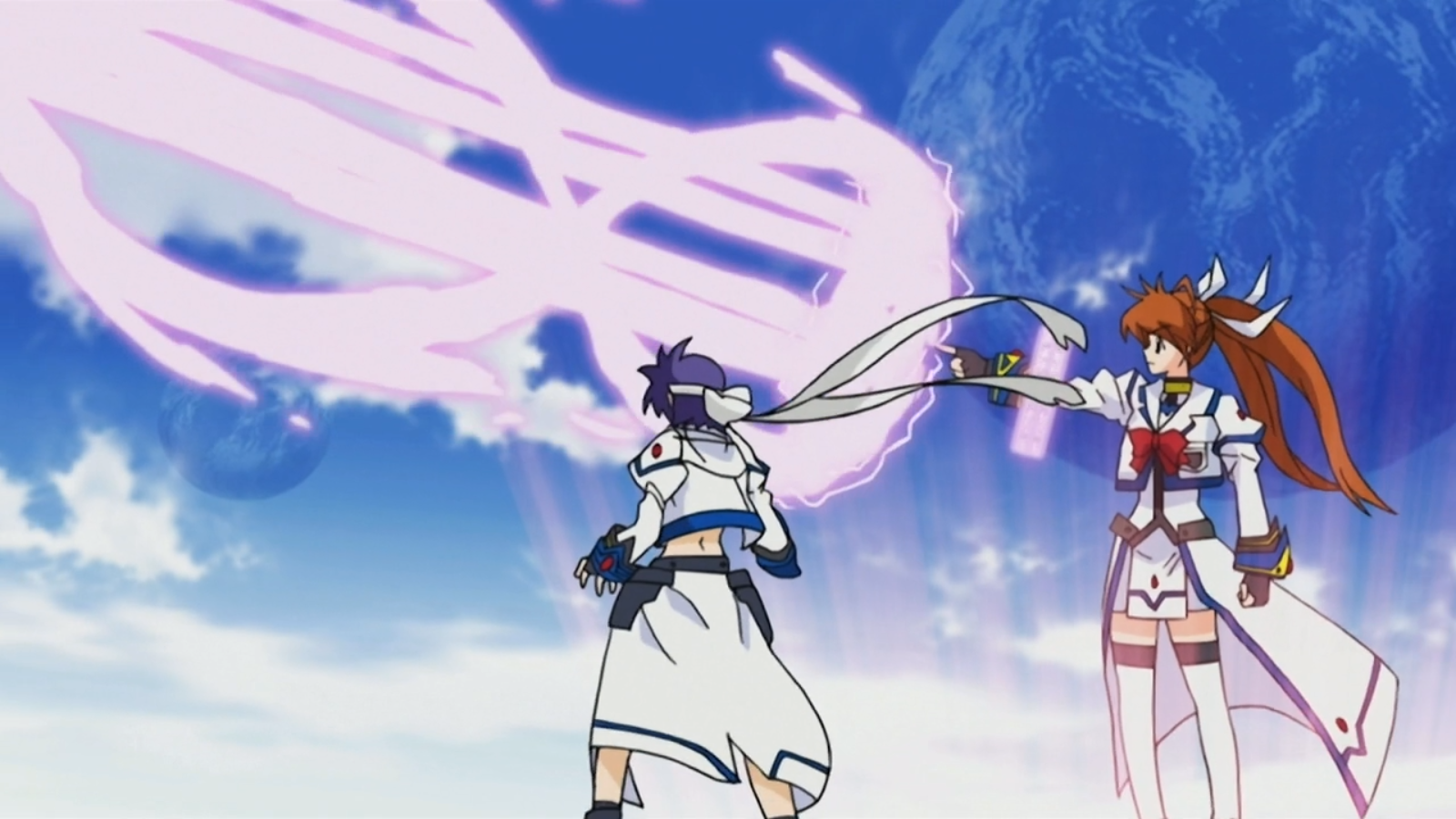Magical Girl Lyrical Nanoha StrikerS, directed by Keizo Kusakawa. Written by Masaki Tsuzuki. Starring Marina Inoue and Kana Mizuki. Seven Arcs and Nanoha StrikerS Project, Japan (2007). 26 episodes of 22 minutes (approx. ). Not rated.
Available on Amazon Prime.
We are now discussing the third anime series in the Lyrical Nanoha franchise, and also the longest, running as it does for twenty-six episodes. Previously, I discussed the original Magical Girl Lyrical Nanoha and followed that up with a review of Lyrical Nanoha A’s. This third series, Magical Girl Lyrical Nanoha StrikerS, is in a sense the last chapter of Nanoha Takamachi‘s saga: Two more anime series, ViVid and ViVid Strike!, follow this one—though only the latter appears to be available in the U.S.—but those two move away from Nanoha herself and focus instead on the next generation of magical girls.
So this is the end of Nanoha. Thus, as I write this review, I am sipping a White Russian in honor of the White Devil. You’ve come a long way, baby.
Before we say anything else about StrikerS, we may pause to comment, like a doting grandfather, “How you’ve grown!” Lyrical Nanoha sprang from the humblest beginnings, being originally a spinoff of a dating sim called Triangle Heart 3. The show was animated by a studio that had never made a magical girl series previously and gave every indication that it didn’t know what it was doing.

There are a lot of magical girl titles that were created as spinoffs of other franchises, but it is probably safe to say that the big three, the most influential, are Pretty Sammy, Nurse Witch Komugi, and Lyrical Nanoha. Of those, however, only Nanoha became a powerhouse title in its own right. Pretty Sammy, in spite of multiple productions, never got out from under the shadow of the franchise that produced it, and has now fallen into obscurity. Nurse Witch Komugi, although more famous than the anime that birthed it, was notable mostly for its fan-pandering, which was novel at the time. Lyrical Nanoha, however, not only eclipsed the video game from which it sprang, but became a mega-franchise in its own right, with multiple anime series, manga, movies, and drama CDs.
Impressive though that is, it serves to hamper StrikerS, the series we’re now discussing. If you watch this show, you might find yourself baffled by the gigantic cast, the important past events mentioned only in passing, and the sheer number of details you’re expected to keep track of. You might say, “Wait, was I supposed to do some reading beforehand?”
Continue reading “Anime Review: ‘Magical Girl Lyrical Nanoha StrikerS’”



